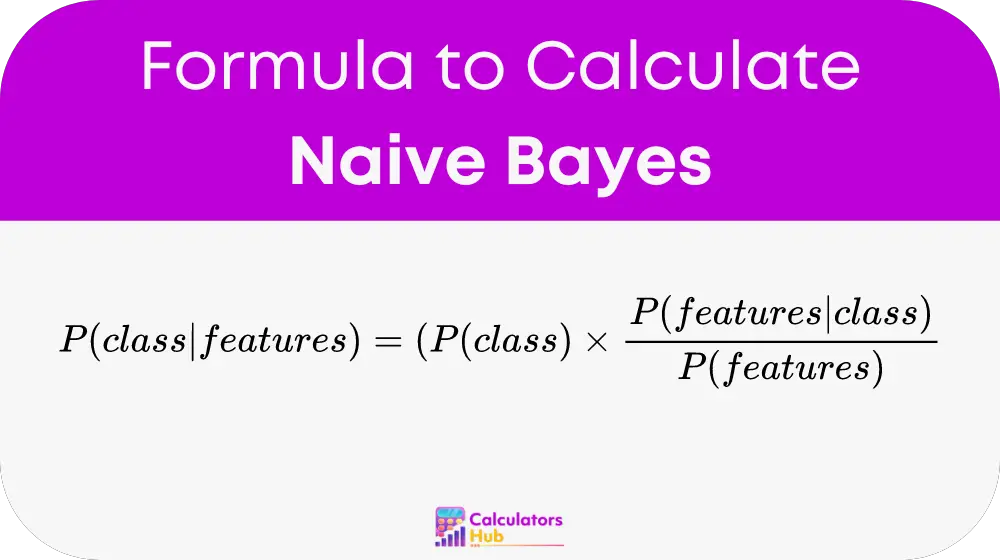The Naive Bayes Calculator is a specialized tool designed to compute probabilities essential in statistical classification tasks. Whether determining the likelihood of an email being spam or diagnosing a disease based on symptoms, this calculator streamlines the process by providing quick and accurate results.
Formula of Naive Bayes Calculator
The Naive Bayes formula is central to its functionality:

- P(class | features): The posterior probability, indicating the likelihood of a class (e.g., spam) given specific features (e.g., words in an email).
- P(class): The prior probability, representing the general occurrence rate of the class in the data.
- P(features | class): The likelihood, showing how often the features appear when the class is true.
- P(features): The prior probability of the features, used to normalize the result.
Table for General Terms
Below is a table containing general terms along with their common values or conversions, aiding users in understanding and utilizing the calculator without needing to compute every detail manually.
| Term | Description | Value/Conversion |
|---|---|---|
| Spam Email | Probability of email being spam | 0.20 |
| Word: “Free” | Likelihood of “free” in spam | 0.05 |
| Normal Email | Probability of regular email | 0.80 |
Example of Naive Bayes Calculator
Suppose we want to determine if an email containing the word “free” is spam. Here are the probabilities needed:
- P(spam): 30% (the overall probability of any email being spam)
- P(not spam): 70% (the probability of any email not being spam)
- P(“free” | spam): 50% (the probability of the word “free” appearing in a spam email)
- P(“free” | not spam): 5% (the probability of the word “free” appearing in a non-spam email)
We calculate the probability that an email is spam given that it contains the word “free” using the Naive Bayes formula:
P("free") = [P("free" | spam) * P(spam)] + [P("free" | not spam) * P(not spam)]
P("free") = [0.50 * 0.30] + [0.05 * 0.70] = 0.185
Now, we use this to find P(spam | “free”):
P(spam | "free") = [P("free" | spam) * P(spam)] / P("free")
P(spam | "free") = [0.50 * 0.30] / 0.185 ≈ 81%
Therefore, there is approximately an 81% chance that an email containing “free” is spam. This example shows how the Naive Bayes Calculator can be applied to email filtering, providing a quantified likelihood of spam based on specific keywords.
Most Common FAQs
A1: The calculator is highly accurate within the scope of its assumptions; however, accuracy can depend on the quality and comprehensiveness of the input data.
A2: While the calculator provides a statistical basis for diagnosis, it should be used in conjunction with professional medical advice.